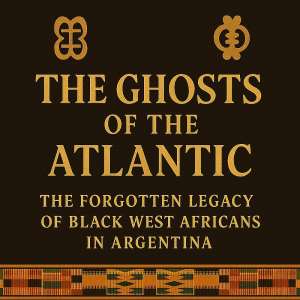
Centuries before Argentina’s tango melodies became a global sensation, a quieter rhythm echoed across the Pampas — the drumbeat of Africa. This is the untold story of Black West Africans whose bodies were trafficked across the Atlantic and whose spirits helped shape a nation that chose to forget them.
🌍 From Shores of Freedom to Ports of Chains
The arrival of Black West Africans in Argentina began under brutal circumstances. In the late 1500s, Spain extended its colonial ambitions to the Rio de la Plata region — modern-day Argentina and Uruguay. The transatlantic slave trade funnelled thousands of enslaved Africans, many from present-day Ghana, Nigeria, and Angola, through the port of Buenos Aires. These people were torn from their communities — Ewe, Akan, Yoruba, Bantu — and dispersed across the vast pampas and humid riversides of Argentina.
Though their origins were diverse, their fate was shared: servitude in homes, plantations, tanneries, and shipyards. Buenos Aires neighborhoods like San Telmo and Monserrat became crucibles of African life, where enslaved and freed Black people gathered to worship, build families, and resist erasure.
🔥 Blood in the Fabric of Nationhood
While Argentina’s national identity is often draped in the romanticism of European migration and revolution, Black West Africans played vital roles in its foundation. Throughout the 18th and early 19th centuries, Afro-Argentines constituted up to half the population in some urban areas.
They bled for the land. Thousands were conscripted into military campaigns — notably the Argentine War of Independence and the devastating Paraguayan War. Often placed on the front lines and given little support, their communities were disproportionately ravaged by battlefield loss.
Culturally, they seeded legacies that endured — candombe rhythms, tango flourishes, and culinary traces in Argentine kitchens. Yet these contributions would soon be buried beneath policies that prioritized “whiteness” as national destiny.
⚠️ Erasure by Design
The near disappearance of Afro-Argentines was not accidental. It was systemic.
Racialized conscription, poor health infrastructure, and rampant disease disproportionately decimated Black communities. Epidemics like cholera and yellow fever swept through impoverished barrios, taking thousands. Census counts gradually excluded them. Cultural festivals were suppressed. Interracial mixing diluted visible African features, and the state actively encouraged European immigration to rewrite Argentina’s racial makeup.
What was once a country where Black drummers summoned spirits in the plazas became a nation that denied their very existence.
🕊️ Echoes That Refuse to Die
Today, the story is not fully lost. Afro-Argentine activists and cultural groups are reclaiming space — drawing lines back to West Africa, insisting that Argentina’s African past is not a footnote but a foundation.
The legacy of María Remedios del Valle, a Black woman who fought in Argentina’s independence war, now stands as a beacon. November 8 is commemorated nationally as the Day of Afro-Argentines and African Culture. Yet, recognition remains fragile.
Many Argentines unknowingly carry African ancestry, erased by generations of silence. Many cultural traditions — from street dances to religious practices — carry whispers of Ewe and Yoruba prayers.
✊🏿 A Lesson for Ghana
For Ghanaians, this story is more than historical trivia. It is a call to reclaim the global imprint of our ancestors. Argentina is just one stage where the drama of African displacement and cultural resilience played out. By sharing this story, we affirm that our history did not end at Elmina or Cape Coast — it echoed across continents, shaping worlds and identities long after the ships set sail.
To educate, we must remember. To honor, we must speak.
Let this piece stand as a drumbeat in our national consciousness — a rhythm that insists that no African story, no matter how far it traveled, should be forgotten.
🌐 Diaspora Divergence: Argentina in the Wider African Tapestry
Unlike in Brazil, the United States, or the Caribbean — where African-descended populations maintained strong cultural visibility and political agency — Afro-Argentines experienced a more profound silencing. While African spirituality thrives in Haitian Vodou and Yoruba traditions pulse through Brazilian Candomblé, Argentina’s African past was deliberately veiled. There were fewer efforts to preserve oral histories, honor ancestral practices, or elevate Black leadership. In essence, Argentina presents a rare case of near-total racial erasure within the diaspora narrative.
This comparison underscores the importance of collective memory. Where some African diasporic communities fought for space within national identities, Afro-Argentines were systematically faded from Argentina’s story. Their experience reminds us that cultural survival is never guaranteed — it demands preservation, recognition, and pride.
Retired Senior Citizen
Teshie-Nungua
[email protected]


